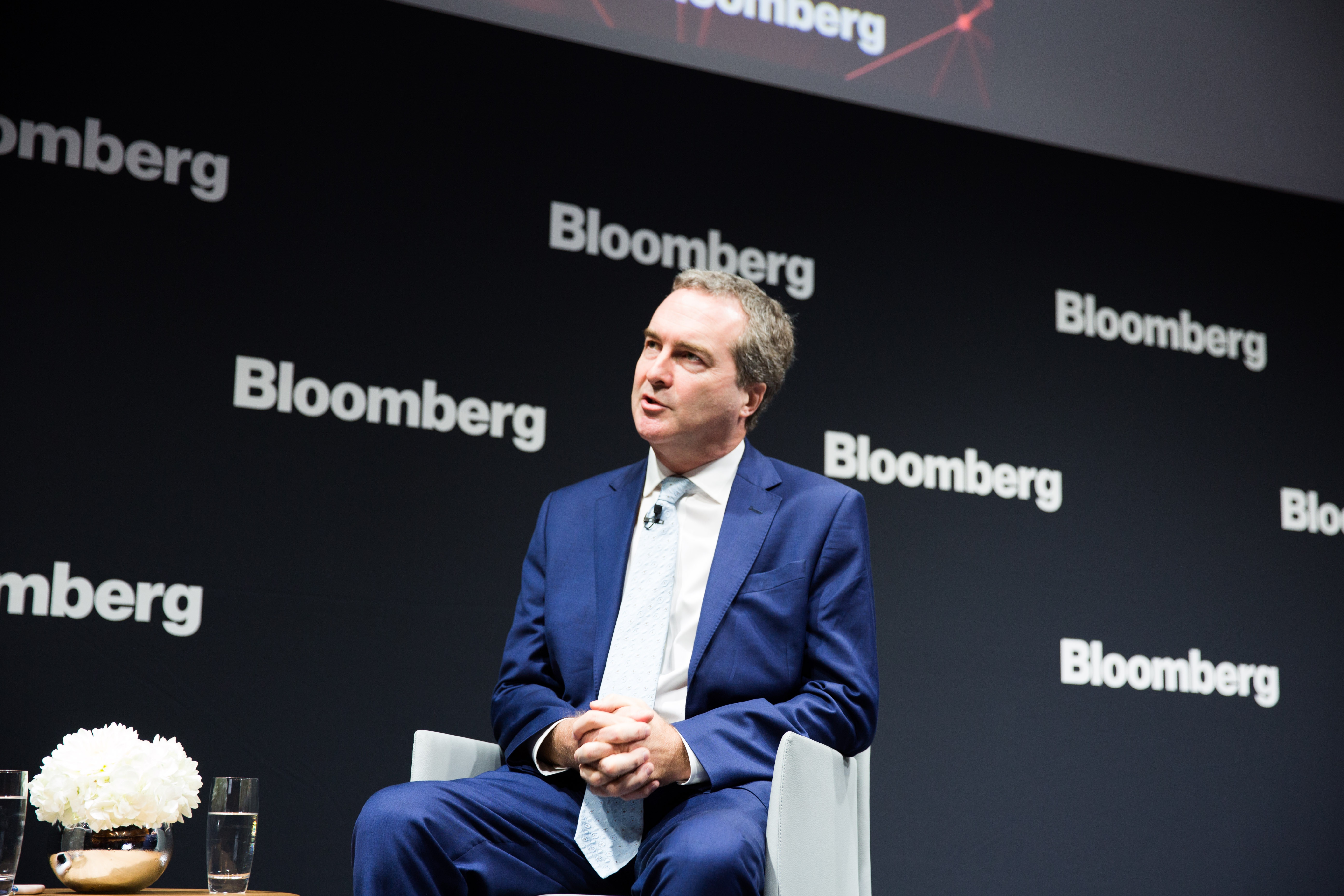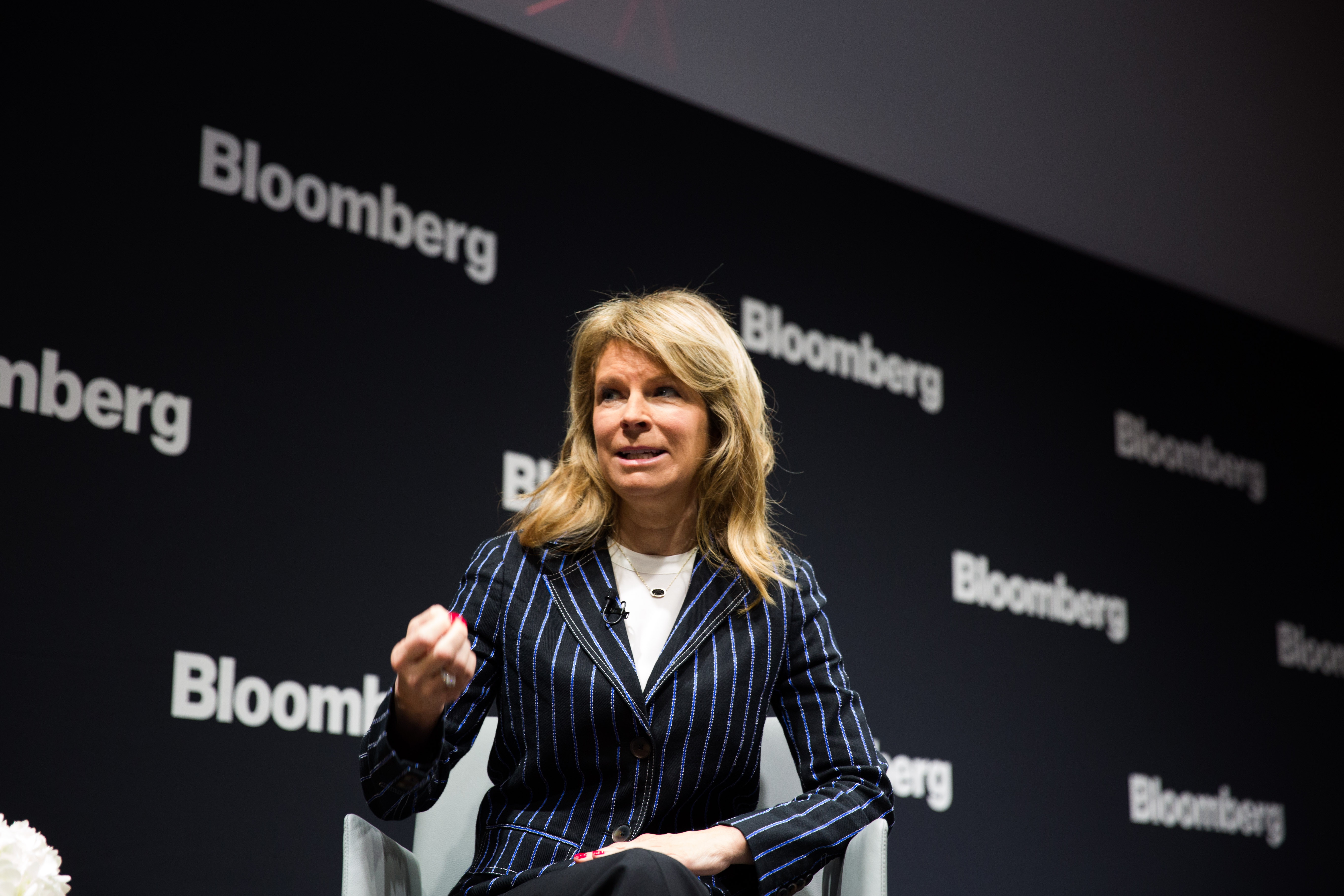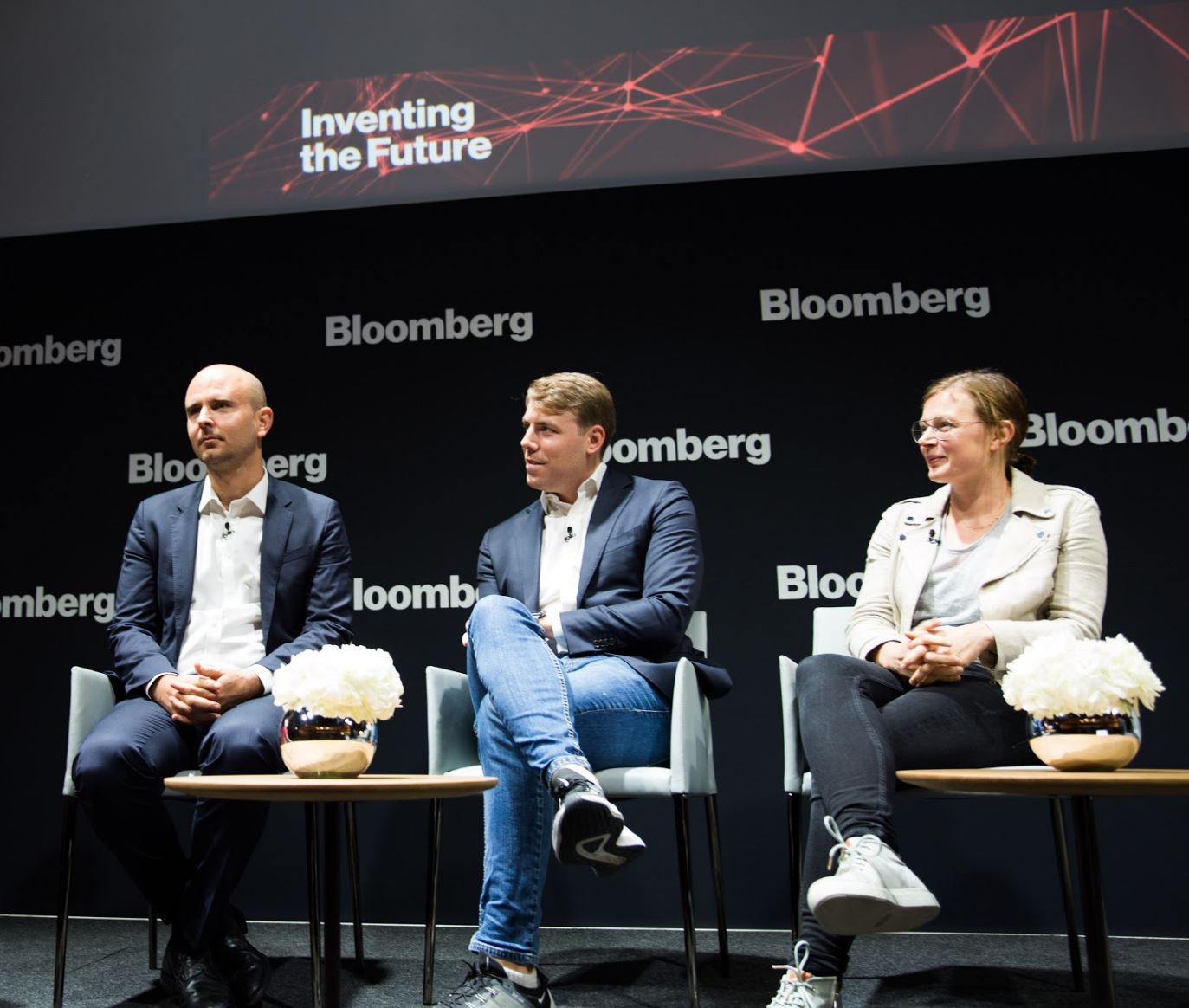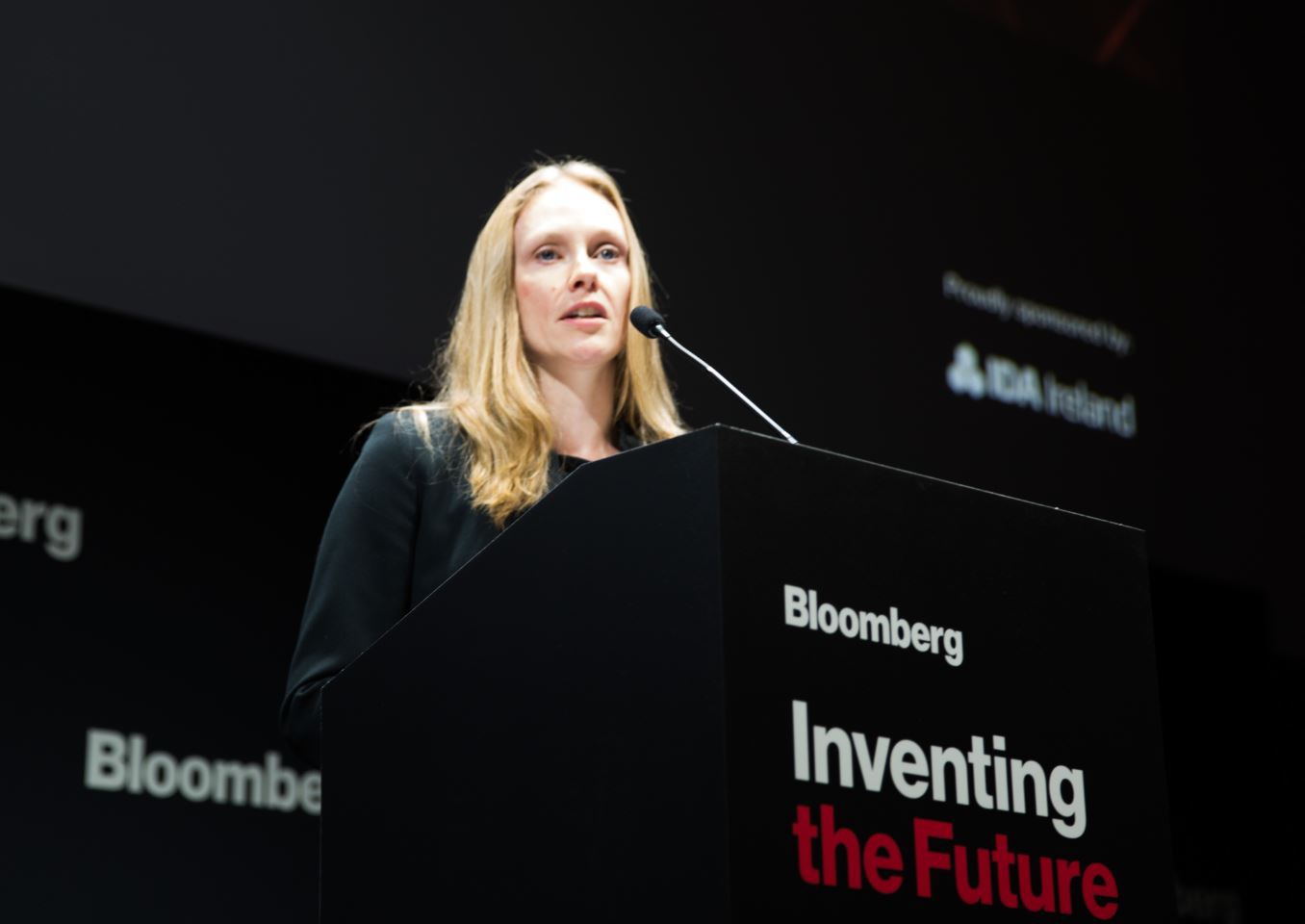Game Changers In a Digital Future
Martin Shanahan, CEO of IDA Ireland and sponsor of the event, had a clear message for business leaders in the room: “These technologies hold the potential to utterly transform sectors, and in our engagement with clients we're trying to understand what those changes might be, how they can apply these technologies and how Ireland can be at the forefront of these technologies.”
Cybersecurity: A Rising Global Risk
The business world is waking-up to the fact that maintaining cybersecurity is now the biggest, ongoing challenge today. Criminal gangs and nation-states have been known to mount sophisticated attacks, and increasingly bad actors can be found working in tandem.
Gartner estimates that spending on information technology security hit $86.4 billion in 2017—but the economic damage of cyberattacks is still expected to run into trillions of dollars over the next decade.
Robert Hannigan, Chairman of BlueVoyant Europe and former director of the U.K’s GCHQ intelligence agency, warned Bloomberg’s Inventing the Future conference that when it comes to cybercrime, there is a growing overlap between criminal groups and nation-states.

Hannigan highlighted the number of known threats the world has seen from an “emboldened” Russia in recent years; from claims that state-backed hackers switched off Ukraine’s power system in 2015 to Moscow's interference in the 2016 U.S. election. The details may still be disputed, but, for the former intelligence leader at least, the direction of travel is clear.
“What was once a battle between governments and defense facilities is now crystallizing into attacks on financial and business infrastructures,” said Hanningan.
“Five years ago I would have said businesses don’t need to worry about nation-state attacks. But the NotPetya ransomware attack aimed at Ukraine spread to Europe, and then worldwide. It paralyzed businesses.”
He noted that an attack on cloud services has the ability to take down a nation’s energy supply or bring down a financial institution. Hannigan then proffered a stark assessment of the future: “It is really a matter of time before someone does something deliberately, or even more likely, accidentally, that will cripple a sector or cause damage across sectors on a large scale."
Harnessing AI to Combat Cybercrime
The continued development of connected devices and appliances to the Internet of Things (IoT) has significantly expanded the attack surface from which cyber intruders can enter a system. But cybersecurity companies are starting to use AI to create new ways to identify and protect against these attacks. One such specialist is Darktrace, founded in 2013 by Cambridge University mathematicians and former U.K. intelligence agency staff, it uses AI to analyze typical tasks carried out by connected devices on a network.
Nicole Eagan, CEO of Darktrace, explained at Inventing the Future how the company had worked with a casino and found that attackers had infiltrated a connected thermostat inside a fish tank in its lobby. This hack enabled the criminals to gain a foothold inside the network, from which they tried to access the casino’s database of high-net-worth players.

The ruse was thwarted when Darktrace’s AI algorithm noted the thermostat’s abnormal behavior and was able to stop it in real-time, before any data was exported. Eagen said this was just one example of how cyber attacks are becoming “more silent, more stealthy and more targeted.”
How to Regulate Blockchain
Another recurring theme at the event involved the best way to approach blockchain. Determining how to regulate any new tech, if at all, is a familiar challenge, but none have been as complex as blockchain, conference-goers were told. Having come into our consciousness as the mechanism underpinning major cryptocurrencies such as Bitcoin and Ethereum, blockchain clearly has significant potential.
Blockchain provides immutable ledgers and a transparent, decentralized way to produce contracts via distributed software code. The technology has the ability to streamline financial transactions on a global scale, but regulators are struggling to keep pace.
Cryptocurrencies currently fall outside the scope of many financial regulators as they offer access to goods and services rather than promising financial returns. The G20’s Financial Stability Board is looking at ways to take risks out of cryptocurrencies without stifling innovation.
FSB chair Mark Carney, Governor of the Bank of England, said earlier this year that cryptocurrencies posed little threat to global financial stability. At its peak, the sector accounted for under 1 percent of global GDP. But, if cryptocurrencies start attracting the attention of financial institutions looking for new asset classes, governments will be looking at more robust regulation.

Ripple is a cross border payments company that uses blockchain and is focused on getting the right framework in place. Speaking at the event, Dan Morgan, Head of Regulatory Relations for Europe at Ripple, said: “For financial institutions to come into this space and see it grow, they are going to need much greater certainty around how they are exposed to digital assets.”
Financial institutions require reassurance on how they hold and are exposed to crypto assets before they treat cryptocurrencies as a valid asset class, he said.
“At the moment I think we're in the early phases where people are starting to define what it is and develop taxonomies, so we can see where the regulatory perimeter is now. There's changes happening at the national level, but it's also happening at the global level. The EU's starting to look at a harmonized approach, so it's happening at all levels.”
The Potential of Pharma and AI
Another key focus of discussion at the event was how new technologies are revolutionizing the fight against diseases and driving improvements in healthcare.
The biomedicine industry produces reams of information about new genome sequences, research studies, clinical trials and new biomarkers. This has resulted in scientists drowning in data, which is holding back potential development of new drugs.
AI algorithms are now being used to scan research papers, patient records and clinical trial data, and work like search engines to help determine which genes are relevant to any given condition, and which compounds are proving to be most effective. It promises to help researchers make better decisions, and can better inform budget decisions around experiments by predicting those likely to be most successful.
Elizabeth Krutoholow, Healthcare Analyst at Bloomberg Intelligence, called it a “fascinating space” that is “really ripe for change.” The adoption of AI algorithms by the sector promises to lower of the costs of drug development, which in turn will reduce the cost of therapeutics.

“We're predicting that the market for AI within healthcare cou ld be about $8 billion by 2022. So that's over a 50 percent growth rate,” said Krutoholow. “We’re seeing it in things like drug development all the way through to diagnostics. So we're talking about drug development, we're talking about electronic health records, genomic data. There's a whole gamut where we're applying AI.”
One of the ways the healthcare sector has started to think about the best use of AI is not as a standalone technology but integrated with existing human expertise and processes. Dr. Andrew Hopkins, CEO of Exscientia, a company that uses AI to discover new drugs, believes a huge opportunity exists because pharmaceuticals is a data-rich industry, with fragmented information.
“Twenty years ago Peter Drucker said the pharma industry is really an information industry. Now we are truly starting to see what that means,” he said.
“What we're trying to do is take the creative process, how you integrate all the potentially thousands of data points that we have at the start of any given project based on experiments, and integrate that data into the design process itself. AI algorithms are actually better at integrating that data together, and potentially better at asking the questions about which compounds to make and test next. It's all about how you can potentially learn faster,” he said.
One of the challenges facing large pharma companies is how they go about reinventing internal processes to embrace a position where a lot of cognitive decisions are potentially made algorithmically. Hopkins suggested those involved in the sector should keep in mind that it does eventually means “liberation.”
“Human drug discoverers are now moving to a position where they can become far more strategic, and much more creative. They can focus on strategy when the tactics are undertaken by algorithms,” he said.
These are early days for the use of AI in biomedicines but there is growing support for AI’s ability to turbocharge the sector.
These were just some of the potentially game-changing technologies discussed at Inventing the Future that could radical change the way we live and work.
Written by Arif Durrani and David Benady, for Bloomberg Media Studios
To find out more about IDA Ireland click here.
